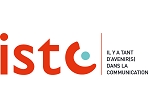Establishment
Language of instruction
French, English
Teaching content
UE9
Training officer(s)
L.ORIGI
Stakeholder(s)
L.ORIGI
Présentation
Prerequisite
Being able to calculate a percentage and a percent variation and to put a number in memory on a calculator, fully understanding the vocabulary acquired during the “Performance Assessment” class (1st year, 1st semester) and “Day-To-Day Business Administration” (1st year, 2nd semester), being proficient in VAT calculations.
Goal
In order to understand the market, the context and customers’ expectations, a company sometimes needs to conduct studies or surveys. The information thus gathered reveal market opportunities and constraints; they make it possible to offer goods and services in tune with the tastes and needs of customers, and therefore likely to bring in high profits. Analysing sales also helps to control effectiveness and to assess the impact on sales of the various communication activities and campaigns being carried out.
All departments of a company, from production to sales or HR, use mathematical tools to measure, control, analyse and predict activity. These tools also contribute to a number of legal documents distributed internally or externally, such as annual activity reports or social balance sheets.
The aim of this course is to present a few basic tools that can be helpful for communication experts.
All departments of a company, from production to sales or HR, use mathematical tools to measure, control, analyse and predict activity. These tools also contribute to a number of legal documents distributed internally or externally, such as annual activity reports or social balance sheets.
The aim of this course is to present a few basic tools that can be helpful for communication experts.
Presentation
Topic 1: STATISTICAL DATA ANALYSIS
• Location parameter calculation and interpretation: mode, arithmetic weighted average, median
• Dispersion parameter calculation and interpretation: range, quartiles, interquartile range, deciles, interdecile ratio, standard deviation
Topic 2: ESTIMATES & CONFIDENCE INTERVALS
• Point estimate of an average, a frequency, a standard deviation
• Interval estimate of an average, a frequency
• Sample size calculation
Topic 3: EVERYDAY MATHEMATICS
Based on short examples from everyday life or from business concerns (growth or inflation rate, economic and social statistics, election polls, retail promotional brochures, etc.), the aim of this part is:
• to learn how to “decipher” information and to become educated “number consumers”
• to explain how showing numerical data in its best light can help to optimise an advertising campaign or reassure shareholders concerned with their company's performance.
• to review the calculation methods learned in 1st year pertaining to invoicing (VAT, discount calculations, etc.)
• Location parameter calculation and interpretation: mode, arithmetic weighted average, median
• Dispersion parameter calculation and interpretation: range, quartiles, interquartile range, deciles, interdecile ratio, standard deviation
Topic 2: ESTIMATES & CONFIDENCE INTERVALS
• Point estimate of an average, a frequency, a standard deviation
• Interval estimate of an average, a frequency
• Sample size calculation
Topic 3: EVERYDAY MATHEMATICS
Based on short examples from everyday life or from business concerns (growth or inflation rate, economic and social statistics, election polls, retail promotional brochures, etc.), the aim of this part is:
• to learn how to “decipher” information and to become educated “number consumers”
• to explain how showing numerical data in its best light can help to optimise an advertising campaign or reassure shareholders concerned with their company's performance.
• to review the calculation methods learned in 1st year pertaining to invoicing (VAT, discount calculations, etc.)
Modalités
Forms of instruction
Cours magistral, exercices pratiques, vidéos et exercices corrigés sur le site web de l’enseignant.
Lecture, practical exercises, videos and exercise answers on the teacher's website.
Organization
| Type | Amount of time | Comment | |
|---|---|---|---|
| Face to face | |||
| 15,00 | |||
| Independent study | |||
| Travail personnel indicatif | 30,00 | Travail du cours, recherche des exercices, travail sur des supports complémentaires (dont internet). | |
| Overall student workload | 45,00 | ||
Evaluation
| Control type | Duration | Amount | Weighting |
|---|---|---|---|
| Continuous assessment | |||
| 2,00 | 1 | 40,00 | |
| Final Exam | |||
| 2,00 | 1 | 60,00 | |
| TOTAL | 100,00 | ||






